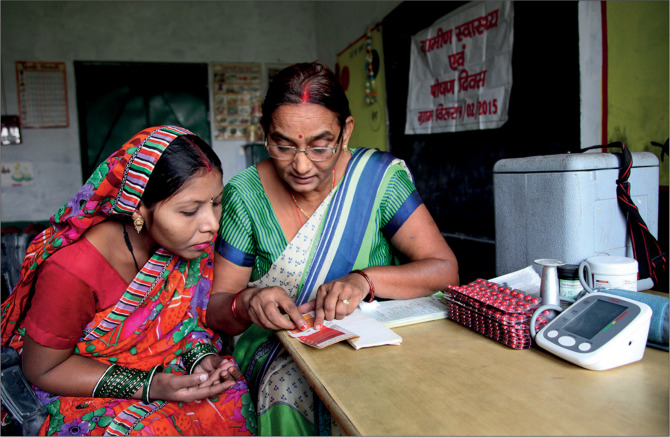This commentary was originally published in The Lancet
By Julie A Quinlivan
Preterm birth is one of the most common causes of death and disability in children in high-income and low-income countries around the world. Wealthy nations have targeted the problem with expensive interventions, including ultrasounds of the cervical length at mid-trimester, multidisciplinary specialist hospital clinics, and expensive pharmaceuticals. However, many cases of preterm birth can be better addressed using a public health approach.
In The Lancet, Matthew Hoffman and colleagues report a randomised, double-blind, placebo-controlled trial that adds to the evidence in support of low-dose aspirin as an additional intervention in the public health arsenal. In their study of pregnant women aged 14–40 years from the Democratic Republic of the Congo, Guatemala, India, Kenya, Pakistan, and Zambia, participants were assigned 81 mg (low-dose) aspirin (n=5990) or placebo (n=5986) from the first trimester of pregnancy. The primary outcome was preterm birth before 37 weeks; among women in whom this outcome could be defined, it occurred in 668 (11·6%) of 5780 women who took aspirin and in 754 (13·1%) of 5764 who took placebo (relative risk 0·89 [95% CI 0·81–0·98], p=0·012). Perinatal mortality, fetal loss, early preterm delivery, and the incidence of women who delivered before 34 weeks with hypertensive disorders of pregnancy were also significantly reduced in women taking aspirin. Other adverse maternal and neonatal events were similar between the groups.
The story of aspirin in pregnancy is decades old. Originally investigated as a drug to stabilise the endothelium of the microvasculature, so as to reduce the risk of recurrent early onset pre-eclampsia, its role has expanded in recent years into a prophylactic for women at increased risk of hypertensive disorders of pregnancy and subsequent preterm birth.
However, the trial by Hoffman and colleagues is the first major study to my knowledge that evaluates if the protective effects are sufficient to justify use of the medication as a global pregnancy measure for the prevention of preterm birth.
The main strength of the paper is the observed generalisability of the benefit across six countries. The intervention was safe, with no increase in maternal or fetal morbidity, and high compliance was observed through residual pill counting. The intervention has many merits: aspirin is cheap to produce, has a long shelf life, and can be easily stored without the need for refrigeration, making it simple to implement even in low-resource settings.
However, the study did have some limitations. The benefits cannot be assumed to hold true for multiparous women or those with multiple pregnancies, who were excluded from participation. The benefits might also not apply in high-resource obstetric settings, where rates of preterm birth might already be low, and clinical guidelines already in place recommend clinical screening of pregnant women to identify those at increased risk of hypertensive diseases of pregnancy, and prescription of prophylactic aspirin in identified cases.
Before routine prescription of aspirin becomes a potential recommendation in high-resource settings, a randomised trial would need to establish that global implementation can achieve superior clinical and cost outcomes to selective clinical screening, via patient histories, examinations, and any proposed biomarkers. In resource-limited settings, an observational post-global implementation trial would also be useful to monitor subsequent trends in preterm birth.
Overall, the paper adds to the body of evidence in support of this approach for the prevention of preterm birth. Before funding expensive hospital-based interventions, health-care providers need to ensure national maternity policies deliver minimum standards of evidence-based care. A public health approach mandates the implementation of low-cost community interventions of known efficacy as a priority. For example, robust data have shown that cessation of smoking in early pregnancy reduces the risk of preterm birth.
As an intervention for smoking, behavioural modification by maternity-care providers is effective in helping pregnant women to quit, yet a systematic review found that many pregnant women identified as smokers are not given formal follow-up or support to quit.
Likewise, nutrition is another public health strategy known to prevent preterm birth. Dietary advice and supplements in cases of deficiency can reduce the risk of preterm birth. A 2018 Cochrane review involving 19 927 women reported a 42% reduced risk of early preterm birth (relative risk 0·58 [95% CI 0·44–0·77]; nine trials, 5204 participants) and an 11% reduced risk of preterm birth (0·89 [0·81–0·97]; 26 trials, 10 304 participants) if a pregnancy supplement of docosahexaenoic acid was prescribed from week 12 of pregnancy.
Read: Low-dose aspirin for the prevention of preterm delivery in nulliparous women with a singleton pregnancy (ASPIRIN): a randomised, double-blind, placebo-controlled trial
